
German Aerospace Center

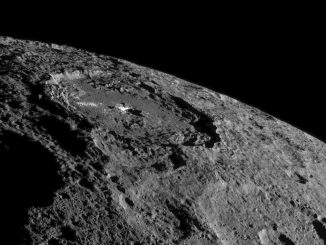
New views of dwarf planet Ceres as Dawn moves higher
The brightest area on Ceres stands out amid shadowy, cratered terrain in a dramatic new view from NASA’s Dawn spacecraft, taken as it looked off to the side of the dwarf planet. Dawn snapped this image from about 920 miles (1,480 kilometres) above Ceres in its fifth science orbit, in which the angle of the Sun was different from that in previous orbits.
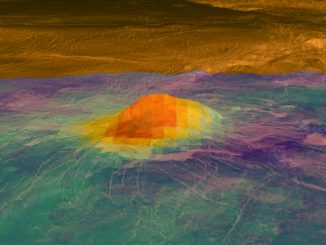
Recently active lava flows from volcano Idunn Mons on Venus
Planetary researchers at the German Aerospace Center (DLR) have pushed the limits of the data resolution from ESA’s Venus Express spacecraft. With this new technique, analysis of the top and eastern flank of 200-kilometre-wide volcano Idunn Mons in the southern hemisphere of Venus revealed an indication of geologically recent volcanism in this area.
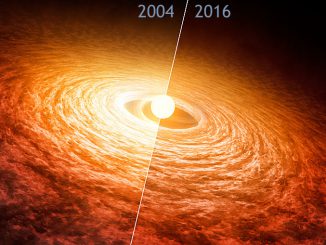
Gluttonous young star may hold clues to planet formation
In 1936, infant star FU Orionis began gobbling material from its surrounding disc of gas and dust with a sudden voraciousness, eating the equivalent of 18 Jupiters in the last 80 years. During a three-month binge, as matter turned into energy, the star became 100 times brighter, heating the disc around it to temperatures of up to 6,650 °C.
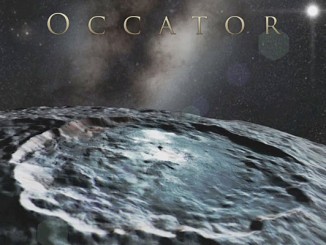
Take a colourful virtual flight over dwarf planet Ceres
A new animation showing a simulated flight over the surface of dwarf planet Ceres using images from NASA’s Dawn spacecraft in its high-altitude mapping orbit has been produced by members of Dawn’s framing camera team at the German Aerospace Center, DLR. The movie emphasises the most prominent craters, such as Occator, and the tall, conical mountain Ahuna Mons.
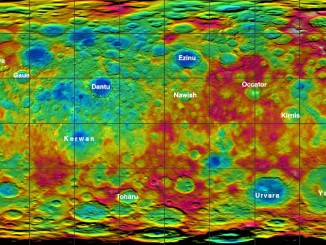
New names and insights at dwarf planet Ceres
Colourful new maps of Ceres, based on data from NASA’s Dawn spacecraft, showcase a diverse topography, with height differences between crater bottoms and mountain peaks as great as 9 miles (15 kilometres). Some of these craters and other features now have official names, inspired by spirits and deities relating to agriculture from a variety of cultures.


Fly over Ceres in a new video
A new animated video of dwarf planet Ceres, based on images taken from NASA’s Dawn spacecraft’s first mapping orbit at an altitude of 8,400 miles (13,600 kilometres), as well as the most recent navigational images taken from 3,200 miles (5,100 kilometres), provides a unique perspective of this heavily cratered, mysterious world.
